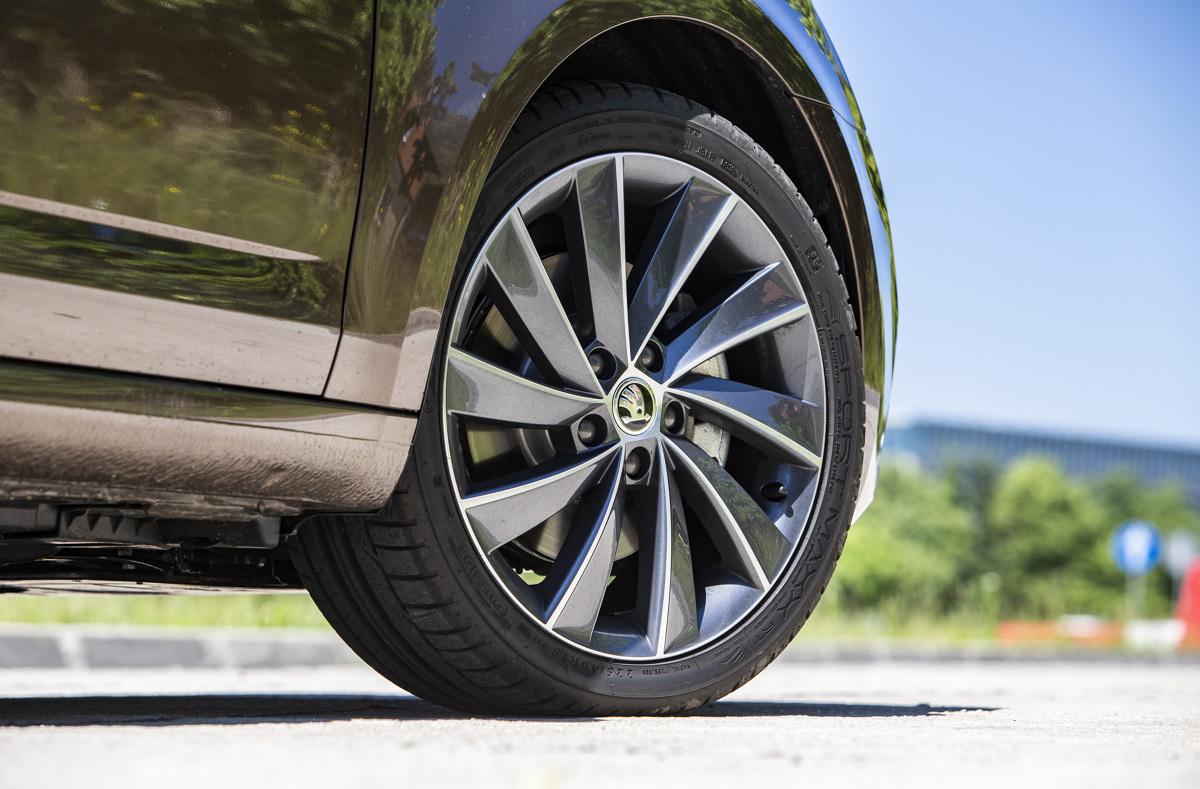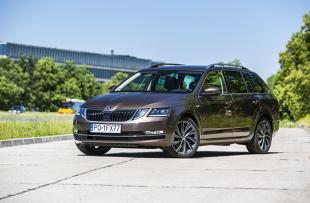
Riding 4x4 in a car. Not only in the desert
 Drive 4×4, i.e. on both axles, typical for SUVs or SUVs. But this type of drive is also used in conventional cars, which improves their traction advantage and safety.
Drive 4×4, i.e. on both axles, typical for SUVs or SUVs. But this type of drive is also used in conventional cars, which improves their traction advantage and safety.
Four-wheel drive is no longer the prerogative of SUVs. Today, ordinary drivers appreciate it more and more, especially in the autumn-winter season. This is especially important for road safety.
The benefits of a 4x4 system include more efficient power transfer from the engine to all four wheels, resulting in much better traction when accelerating and cornering. This, in turn, contributes to greater safety and driving pleasure, regardless of road conditions and weather. The 4x4 drive is indispensable in winter when slippery surfaces can be encountered. Thanks to this solution, it is also easier to overcome the snowdrift.
 Skoda has one of the widest ranges of vehicles equipped with 4×4 drive. In addition to the Kodiaq and Karoq SUVs, all-wheel drive is also available on the Octavia and Superb models.
Skoda has one of the widest ranges of vehicles equipped with 4×4 drive. In addition to the Kodiaq and Karoq SUVs, all-wheel drive is also available on the Octavia and Superb models.
Both cars use the same type of 4x4 system with a fifth-generation electronically controlled multi-plate clutch, the task of which is to smoothly distribute the drive between the axles. The 4×4 drive used in Skoda is intelligent, since it has the appropriate distribution of torque depending on the grip of the wheels.
By default, engine torque is concentrated at the front wheels, which helps to optimize fuel consumption. In such a difficult situation, the torque is smoothly directed to the rear axle. The system uses data from other control mechanisms such as: wheel speed sensor, wheel speed sensor or acceleration sensor. The 4×4 clutch enhances traction control, improves vehicle dynamics and safety. The moment of turning on the drive to the rear axle is imperceptible to the driver.
In addition, the 4×4 clutch can work with all active safety systems such as ABS and ESP. Thanks to this solution, when changing the power transmission, not only the wheel speeds are taken into account, but also, for example, the braking force or data from the engine controlling the computer.
“Remember that the 4 × 4 drive will make it easier for us to start, but the braking distance will be the same as that of a car with one axle,” says Radosław Jaskulski, instructor at Skoda Auto Szkoła.
 The 4×4 drive of the Octavia family is available in the RS version (Sedan and Estate) with a 2 HP diesel engine. turbocharged, which is mated to a six-speed DSG automatic transmission. In addition, all engine versions of the off-road Octavia Scout are equipped with a 184×4 drive system, such as: 4-horsepower 1.8 TSI turbo petrol engine with a six-speed DSG gearbox, 180 TDI turbodiesel with 2.0 hp. manual transmission or seven-speed DSG transmission) and 150 TDI turbodiesel with 2.0 hp. with a six-speed DSG gearbox. We add that the Octavia Scout is available only in the station wagon. It also has 184mm more ground clearance (to 30mm) and an off-road package that includes plastic covers for the chassis, brake lines and fuel lines.
The 4×4 drive of the Octavia family is available in the RS version (Sedan and Estate) with a 2 HP diesel engine. turbocharged, which is mated to a six-speed DSG automatic transmission. In addition, all engine versions of the off-road Octavia Scout are equipped with a 184×4 drive system, such as: 4-horsepower 1.8 TSI turbo petrol engine with a six-speed DSG gearbox, 180 TDI turbodiesel with 2.0 hp. manual transmission or seven-speed DSG transmission) and 150 TDI turbodiesel with 2.0 hp. with a six-speed DSG gearbox. We add that the Octavia Scout is available only in the station wagon. It also has 184mm more ground clearance (to 30mm) and an off-road package that includes plastic covers for the chassis, brake lines and fuel lines.
In the Superb model, the 4×4 drive is available in four engine options. Petrol engines: 1.4 TSI 150 hp (six-speed manual transmission) and 2.0 TSI 280 hp. (six-speed DSG), and turbodiesels: 2.0 TDI 150 hp. (six-speed manual transmission) and 2.0 TDI 190 hp. - step DSG). The Superb 4×4 is offered in both sedan and wagon body styles.
What group of buyers are these cars addressed to? Of course, such a car will be useful to a driver who often has to drive on roads with worse coverage, including forest and field roads, for example, a villager. The 4x4 drive is also invaluable in mountainous terrain, and not just in winter. This is useful, for example, during steep ascents with a trailer.
But the 4×4 system is so versatile that road users should also choose it. This drive significantly improves driving safety.

